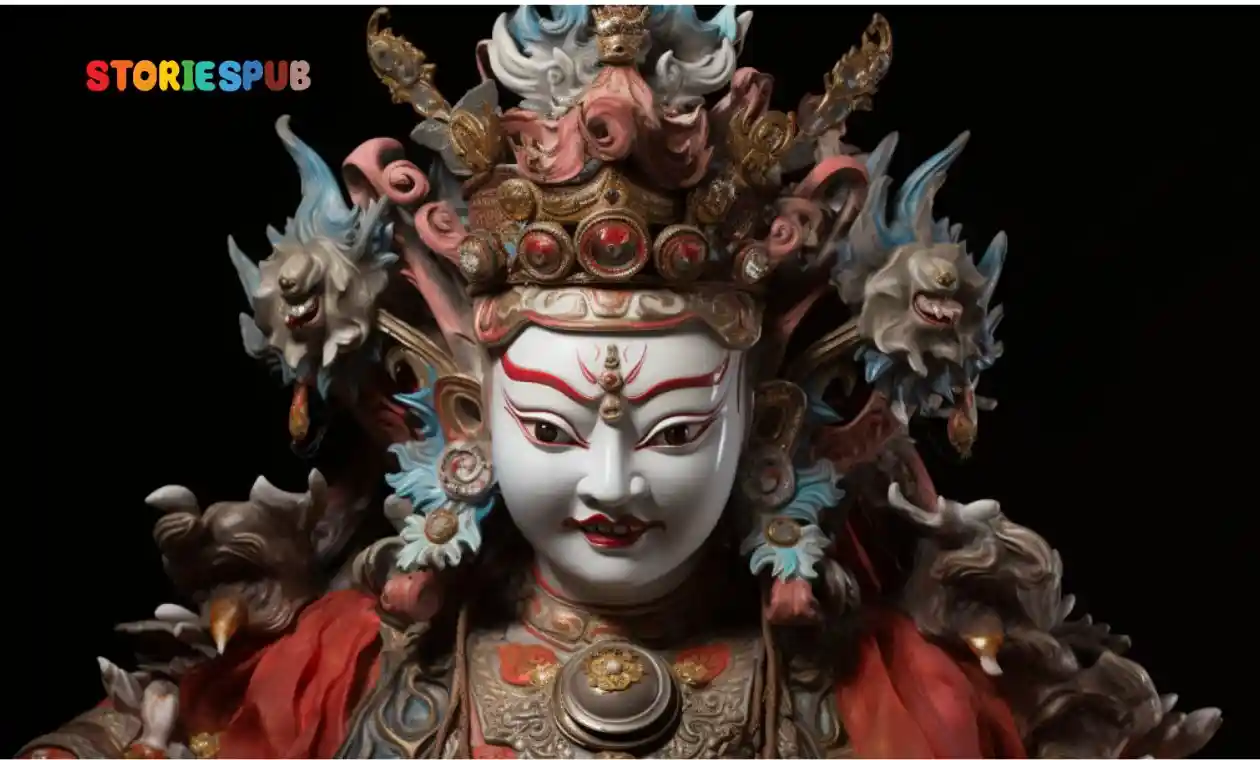Summarize this Article with:

The intoxicating aroma of freshly brewed coffee wafting through the air, the comforting embrace of a warm cup cradled in your hands, and the buzz of conversation all around—these are the familiar sensations that greet us when we step into a Starbucks coffee shop. Yet, behind this ubiquitous coffeehouse chain lies a remarkable tale of entrepreneurial spirit, innovation, and cultural influence.
In the 1970s, America was at the cusp of a coffee revolution. Traditional drip coffee and instant brews were the norm, but a change was brewing. In this backdrop, a small coffee store in Seattle began its journey, destined to become a global icon. Starbucks, a name synonymous with premium coffee and a welcoming atmosphere, emerged as a trailblazer in transforming the way the world enjoys coffee.
As we delve into the history of Starbucks, we embark on a journey through time—a journey that will uncover the humble beginnings of a brand that would redefine coffee culture. From the first Starbucks store in Seattle’s Pike Place Market to the far-reaching corners of the globe, we’ll trace the path of Starbucks’ growth and its unwavering commitment to delivering not just coffee but an experience.
Beyond the aroma and taste, Starbucks has cultivated a unique culture, embracing the idea of the “Third Place” where people can gather, connect, and savor life’s moments. This culture has resonated worldwide, leaving an indelible mark on communities and individuals alike.
Join us as we explore Starbucks’ rich history, from its early days as a single store to its expansion into a global phenomenon. Along the way, we’ll uncover the ethical practices that have shaped Starbucks’ identity, the evolution of its menu, and the challenges it faced on its journey. We’ll also delve into Starbucks’ influence on popular culture, from Hollywood films to the iconic Starbucks cup.
Starbucks isn’t just about coffee; it’s about the experience, the culture, and the connections it fosters. As we journey through the chapters of Starbucks’ history, we’ll discover how this beloved brand has brewed its way into the hearts of millions, making it much more than just a place for coffee—it’s a community.
The Birth of Starbucks
In the heart of Seattle, Washington, during the early 1970s, a small, unassuming store quietly marked the inception of Starbucks—a name that would soon resonate with coffee lovers worldwide. The journey began with three friends—Jerry Baldwin, Zev Siegl, and Gordon Bowker—who shared a common passion for high-quality coffee beans.
A trip to Peet’s Coffee & Tea in Berkeley, California, inspired them. After tasting the robust, flavorful coffee brewed by Alfred Peet, they envisioned bringing a similar experience to Seattle. In 1971, the trio opened the first Starbucks store at 2000 Western Avenue. This location would soon become legendary in the annals of coffee history.
The initial vision of Starbucks was simple but profound: to source and roast high-quality coffee beans and provide them to customers. The founders’ commitment to sourcing the finest coffee beans was evident from the very beginning. They established relationships with coffee growers in coffee-producing regions across the globe, aiming to provide an unparalleled coffee experience.
Starbucks’ early values centered on the idea of offering customers more than just coffee; they aimed to create a space where people could gather, converse, and enjoy a sense of community. In fact, the brand’s name was inspired by a character from Herman Melville’s novel, “Moby-Dick.” Starbucks, the chief mate of the Pequod, embodied adventure and the allure of the high seas—a spirit the founders wanted to capture in their coffee.
The first Starbucks store, situated in Seattle’s historic Pike Place Market, was a quaint, inviting space. It featured a rustic aesthetic with wooden shelves, bags of freshly roasted coffee beans, and a coffee bar that offered brewed coffee, espresso, and a variety of teas. The tantalizing aroma of freshly ground coffee beans filled the air, drawing locals and tourists alike to experience this unique coffee haven.
Little did the founders know that this unassuming store in Seattle would be the birthplace of a global coffee phenomenon. As the story of Starbucks unfolds, we’ll witness how these modest beginnings laid the foundation for a brand that would redefine the coffee culture and change the way the world savors its favorite brew.
The Starbucks Experience
Starbucks didn’t just want to sell coffee; it aspired to create a unique and inviting environment where people could come together, relax, and connect. This vision gave birth to the concept of the “Third Place”—a space distinct from home (the first place) and work (the second place), where people could socialize, work, read, or simply savor a cup of coffee.
A core part of the Starbucks experience is its emphasis on coffee itself. Starbucks positioned coffee as more than just a beverage; it was a sensory experience. They meticulously sourced the finest beans, roasted them to perfection, and brewed them to highlight their inherent flavors. The distinctive, aromatic brews became synonymous with Starbucks and set it apart from typical coffee shops.
The innovative store design played a pivotal role in creating this unique atmosphere. Starbucks stores were intentionally designed to be warm and welcoming. The use of earthy tones, comfortable seating, and cozy lighting made customers feel at ease. The décor often included local art and cultural elements, reflecting the community in which each store was situated.
The iconic mermaid logo, inspired by a 16th-century Norse woodcut, graced each Starbucks store. This symbol was more than just a logo; it became a recognizable mark of quality and consistency worldwide. Starbucks was keen on maintaining this consistency, and it contributed to the sense of familiarity and comfort that customers experienced in any Starbucks store, whether in Seattle, New York, London, or Tokyo.
Moreover, Starbucks took its commitment to sustainability seriously. The company implemented various eco-friendly initiatives, such as offering reusable cups and sourcing coffee beans from farmers who practiced ethical and sustainable farming. This commitment to ethical practices not only resonated with customers but also positioned Starbucks as a socially responsible corporation.
In essence, Starbucks wasn’t just selling coffee; it was selling an experience—an opportunity to slow down, enjoy a moment of respite, and engage with the world around us. The “Third Place” concept, emphasis on quality coffee, innovative store designs, and sustainability efforts collectively defined the unique Starbucks experience, transforming it from a mere coffee shop into a global cultural phenomenon.
Expansion and Growth
As Starbucks continued to captivate coffee lovers in Seattle, its ambitious vision reached far beyond the city limits. The company swiftly embarked on a journey to become a global brand, and it wasn’t long before Starbucks stores began popping up in various cities and countries around the world.
Starbucks’ global expansion was driven by its desire to share the Starbucks experience with a wider audience. The company sought to replicate the inviting atmosphere, quality coffee, and sense of community that had made its Seattle stores so popular. In 1987, Starbucks opened its first store outside of Seattle, in Chicago, marking the beginning of its nationwide presence in the United States. Soon after, Starbucks crossed international borders, with the first store outside the U.S. opening in Tokyo, Japan, in 1996.
However, with rapid expansion came challenges. Maintaining the consistency of the Starbucks experience across diverse locations and cultures was no small feat. Starbucks faced criticism and skepticism as it grew. Some questioned whether a global chain could still capture the essence of a local coffee shop. To address this, Starbucks continued to emphasize its commitment to local communities by sourcing coffee from local farmers, showcasing local artists in its stores, and contributing to community development.
Throughout its expansion, Starbucks’ iconic logo remained a constant. The green mermaid, or siren, represented the company’s maritime heritage and its commitment to quality. Over the years, the logo evolved, with minor adjustments, but it remained instantly recognizable. The Starbucks brand became synonymous with the promise of great coffee and a welcoming ambiance, whether you were in Seattle, London, or Beijing.
Starbucks’ approach to expansion was marked by adaptability and innovation. The company introduced new products and store formats, such as drive-thru locations and mobile ordering, to cater to changing customer preferences. Starbucks also ventured into new markets, including China, where it has since become a major player in the coffee industry.
In essence, Starbucks’ global expansion was a testament to its ability to transcend cultural boundaries and offer a consistent and inviting experience to coffee enthusiasts worldwide. While challenges arose along the way, Starbucks’ commitment to its core values and its willingness to adapt were key factors in its sustained growth and success on the global stage.
Coffee Sourcing and Ethical Practices
Starbucks’ journey is not only about serving great coffee but also about sourcing it responsibly and ethically. From its early days, the company has been committed to ensuring that the coffee it serves benefits not only its customers but also the coffee farmers and the environment.
Starbucks’ Commitment to Responsible Coffee Sourcing
Starbucks recognized that the quality of its coffee was closely tied to the well-being of coffee farmers. To ensure a consistent supply of high-quality beans, the company took a proactive approach to coffee sourcing. Starbucks established direct relationships with coffee farmers and cooperatives around the world. This direct-sourcing model allowed Starbucks to have greater control over the quality of its beans and to work directly with farmers to improve their coffee-growing practices.
Starbucks also introduced its Coffee and Farmer Equity (C.A.F.E.) Practices program. C.A.F.E. Practices set strict guidelines for ethical and sustainable sourcing, covering various aspects of coffee production, from environmental conservation to fair treatment of workers. Starbucks required that coffee suppliers meet these standards to be eligible to do business with the company.
Discussing Fair Trade and Ethical Practices
Starbucks played a pivotal role in popularizing Fair Trade coffee in the United States. Fair Trade ensures that coffee farmers receive fair compensation for their beans, providing them with a decent standard of living. Starbucks began offering Fair Trade coffee in its stores in 2000, and this move contributed significantly to raising awareness about ethical coffee sourcing.
In addition to Fair Trade, Starbucks initiated several sustainability programs. For example, the company set a goal to make its coffee supply chain 100% ethically sourced, including commitments to support farmer loans and provide farmer support centers to educate coffee growers about sustainable practices.
Ethical practices extended beyond coffee sourcing. Starbucks prioritized social responsibility by implementing initiatives like the Starbucks College Achievement Plan, which provides eligible employees the opportunity to earn a bachelor’s degree through Arizona State University’s online program.
The Impact of Starbucks on the Coffee Industry
Starbucks’ commitment to responsible sourcing and ethical practices had a profound impact on the coffee industry as a whole. By popularizing Fair Trade and setting high standards for ethical sourcing, Starbucks encouraged other coffee companies to follow suit. This, in turn, led to improved conditions for coffee farmers and more sustainable coffee production practices worldwide.
Starbucks’ initiatives also spurred consumer awareness about the importance of ethical and sustainable sourcing. As customers became more conscious of where their coffee came from and how it was produced, it put pressure on the entire industry to adopt more ethical and sustainable practices.
In summary, Starbucks’ dedication to responsible coffee sourcing and ethical practices not only improved the quality of its coffee but also set industry standards for sustainability and fair treatment of coffee farmers. Through initiatives like Fair Trade and the C.A.F.E. Practices program, Starbucks not only transformed its own supply chain but also influenced the entire coffee industry to prioritize ethical and sustainable practices.
Starbucks’ Menu Evolution
Starbucks is not just a coffee shop; it’s an experience, and a significant part of that experience is its menu. Over the years, Starbucks has undergone a remarkable menu evolution, expanding from a simple coffeehouse to a diverse selection of beverages, food items, and partnerships that cater to a wide range of tastes and preferences.
Tracing the Evolution of the Starbucks Menu
Starbucks began its journey as a coffee retailer, focusing primarily on serving freshly brewed coffee. The early menu featured a limited selection of coffee beans, and customers could choose from various roast profiles and origins. However, it was the quality of Starbucks’ coffee that set it apart.
As Starbucks gained popularity, the menu expanded to include different brewing methods like French press and pour-over, allowing customers to customize their coffee experience. The menu evolution was a reflection of Starbucks’ commitment to providing high-quality coffee tailored to individual preferences.
The Introduction of Frappuccinos, Lattes, and Seasonal Drinks
One of the most significant milestones in Starbucks’ menu evolution was the introduction of specialty drinks. The Frappuccino, a blended beverage combining coffee, ice, milk, and flavorings, became an instant hit, especially during the hot summer months. It marked Starbucks’ venture beyond traditional coffee and appealed to a broader audience.
Lattes, cappuccinos, and mochas soon found their place on the menu, catering to those who preferred espresso-based drinks. Starbucks’ innovation extended to seasonal drinks like the Pumpkin Spice Latte, which created a cult following and became a symbol of the fall season.
Starbucks’ menu wasn’t just about coffee; it also included a variety of teas, refreshers, and non-coffee options to accommodate different tastes and dietary preferences. The menu evolution continued with the introduction of cold brew coffee, nitro cold brew, and alternative milk options, reflecting changing consumer preferences.
Starbucks’ Food Offerings and Partnerships
Starbucks didn’t stop at beverages; it also ventured into the world of food. The company expanded its menu to include pastries, sandwiches, salads, and snacks, transforming itself into a one-stop shop for breakfast, lunch, and snacks. Starbucks partnered with local bakeries and suppliers to provide fresh and diverse food options.
Notably, Starbucks’ acquisition of La Boulange in 2012 elevated its food offerings to a new level. La Boulange brought artisanal pastries and baked goods to Starbucks stores, enhancing the overall dining experience.
In addition to food, Starbucks established partnerships with brands like Teavana, Evolution Fresh, and Ethos Water, further diversifying its menu with tea, juices, and ethically sourced bottled water.
In summary, Starbucks’ menu evolution is a testament to its commitment to providing a complete coffeehouse experience. From a focus on high-quality coffee to the introduction of specialty drinks, food items, and strategic partnerships, Starbucks has continuously adapted to meet the changing tastes and preferences of its customers, ensuring there’s something for everyone on its menu.
Cultural Influence and Community Engagement
Starbucks isn’t just a coffee shop; it’s a cultural phenomenon. Beyond serving coffee, it has played a significant role in promoting art, music, and community engagement, while also taking a stance on social issues.
Starbucks’ Role in Promoting Art and Music
Starbucks has always strived to provide more than just a place to grab a cup of coffee; it aims to offer a cultural experience. One way it achieves this is by promoting art and music. Starbucks stores often feature a rotating selection of local artwork, providing exposure to emerging artists. The soothing ambiance, created with comfortable seating and soft music, has made Starbucks a popular spot for studying, meetings, and enjoying art.
Starbucks has also ventured into music through initiatives like “Hear Music.” This program featured carefully curated playlists and CDs that were sold in stores. Starbucks even formed a partnership with Apple’s iTunes to offer customers a “Pick of the Week” song download, further blending the worlds of coffee and music.
The Starbucks Foundation and Community Engagement
Community engagement is a core value at Starbucks. The Starbucks Foundation, established in 1997, plays a pivotal role in this commitment. It focuses on supporting education and local community development. Through initiatives like the Opportunity for Youth grants, which help young people gain access to education and employment opportunities, Starbucks actively invests in the communities it serves.
Starbucks also encourages its employees, known as partners, to get involved in community service. The company offers paid time off for volunteer work, and every April, Starbucks hosts its Global Month of Service, during which partners worldwide participate in community projects.
Starbucks’ Stance on Social Issues
Starbucks hasn’t shied away from addressing social issues. The company’s leadership believes in using its platform to advocate for positive change. One notable example is Starbucks’ commitment to environmental sustainability. They’ve set ambitious goals to reduce their environmental footprint, including efforts to make their cups more recyclable and to reduce water usage in their stores.
Another significant stance has been Starbucks’ commitment to hiring veterans and refugees, providing employment opportunities to those who often face unique challenges in the job market.
In 2018, Starbucks made headlines by closing thousands of stores for an afternoon to conduct racial bias training following an incident at one of their locations. This move demonstrated Starbucks’ willingness to address issues of racial discrimination.
Starbucks has also taken positions on issues like LGBTQ+ rights and marriage equality, consistently advocating for inclusivity and equality.
Starbucks’ cultural influence extends far beyond coffee. Its promotion of art and music, community engagement through the Starbucks Foundation, and its willingness to take stances on important social issues make it a company that actively seeks to be a positive force in the world, not just a coffee provider.
Challenges and Controversies
Starbucks, like any large corporation, has faced its fair share of challenges and controversies throughout its history. This section delves into some of the notable issues Starbucks has encountered and how the company has responded.
Addressing Controversies Related to Starbucks
Starbucks has occasionally found itself at the center of controversies. One such instance was the 2018 incident in Philadelphia when two African American men were arrested at a Starbucks store for waiting for a friend without making a purchase. The incident sparked widespread outrage and accusations of racial profiling. In response, Starbucks closed all its company-owned stores in the U.S. for a day of racial bias training. The company also pledged to make changes to prevent such incidents in the future, including a new policy allowing anyone to use Starbucks facilities, like restrooms, without making a purchase.
Starbucks has also faced criticism regarding its labor practices. Some employees have alleged that they face inadequate wages and insufficient access to benefits. In response, Starbucks has made efforts to improve its compensation and benefits packages, including offering stock options and healthcare benefits to both full-time and part-time employees.
The Impact of Economic Downturns and Competition
Starbucks, like many businesses, felt the impact of economic downturns, particularly during the global financial crisis of 2008. During this time, some consumers cut back on discretionary spending, impacting Starbucks’ sales. To address this challenge, Starbucks closed underperforming stores and reevaluated its expansion strategy.
Additionally, competition in the coffee industry is fierce. Starbucks faces competition from other coffee chains, independent coffee shops, and even fast-food giants. Staying ahead of competitors requires continuous innovation and adaptation to changing consumer preferences.
How Starbucks Responded to Challenges
Starbucks is known for its willingness to address challenges head-on. When faced with controversies, the company has shown a commitment to making meaningful changes. The racial bias incident mentioned earlier prompted Starbucks to implement extensive training programs to promote diversity, equity, and inclusion within the company.
To combat economic challenges, Starbucks has diversified its offerings. In addition to coffee, it expanded its menu to include various food items, specialty beverages, and merchandise. It also ventured into the tea business with its acquisition of Teavana. These moves helped Starbucks remain resilient in the face of economic fluctuations.
Moreover, Starbucks continues to innovate and adapt to changing consumer preferences. It introduced mobile ordering and payment options, enhancing convenience for customers. Sustainability initiatives, such as efforts to reduce waste and promote ethical sourcing, have also been part of Starbucks’ response to evolving consumer values.
Starbucks’ history is not without its challenges and controversies. However, the company’s commitment to addressing these issues and evolving in response to changing circumstances has played a significant role in its continued success and relevance in the global coffee industry.
Starbucks in Popular Culture
Starbucks has become more than just a coffee shop; it’s a cultural icon. Its distinctive green and white logo, along with the inviting aroma of freshly brewed coffee, have found their way into various facets of popular culture.
Exploring Starbucks’ Presence in Movies and TV Shows
Starbucks has made numerous appearances in movies and television shows, becoming a symbol of everyday life. In films and TV series set in urban environments, you’ll often spot characters sipping Starbucks coffee or meeting friends at Starbucks locations. This presence helps create a sense of familiarity and relatability for audiences. An excellent example is the sitcom “Friends,” where Central Perk, a fictional coffee shop, bears a resemblance to the cozy, communal atmosphere of Starbucks stores.
Starbucks’ Role in Contemporary Urban Culture
Starbucks has become synonymous with modern urban culture. Its stores are not just places to grab a coffee; they serve as communal spaces for work, study, and socializing. The concept of the “Third Place,” a term Starbucks popularized, refers to spaces outside of home (the first place) and work (the second place) where people can gather comfortably. Starbucks locations have become these Third Places, contributing to the idea of a café culture in bustling cities worldwide.
Starbucks also plays a role in shaping trends. Seasonal offerings like the Pumpkin Spice Latte have become annual rituals for many, marking the arrival of autumn. Additionally, Starbucks’ embrace of technology, with its mobile app for ordering and rewards program, reflects the digital age’s influence on contemporary culture.
The Starbucks Cup Phenomenon
Starbucks’ iconic white to-go cups have become more than just vessels for coffee; they’ve become canvases for self-expression. The Starbucks cup phenomenon refers to the practice of customers personalizing their cups with their names, drawings, or messages. This trend has exploded on social media platforms, with customers sharing their creatively customized cups.
Starbucks has even embraced this trend with seasonal cup designs, like the holiday-themed cups that garner significant attention each year. These cups often feature minimalist designs, allowing customers to interpret and decorate them in their unique ways, fostering a sense of community and creativity among coffee drinkers.
In conclusion, Starbucks has embedded itself deeply into popular culture, not just as a coffee provider but as a symbol of urban life and self-expression. Its appearances in media, role as a communal space, and the Starbucks cup phenomenon all contribute to its enduring presence in contemporary culture.
The Future of Starbucks
As Starbucks continues to evolve in a changing world, its future is shaped by innovation, sustainability, and its potential to influence the global coffee industry.
Speculating on Starbucks’ Future Directions and Innovations
Starbucks has a history of innovation, from introducing the Frappuccino to embracing mobile ordering and payment. Looking forward, it’s likely that Starbucks will continue to explore new ways to enhance the customer experience. This could involve further integration of technology, such as expanding its delivery and mobile ordering options. Additionally, Starbucks may experiment with new menu items, flavors, and partnerships to stay relevant and attract a broader customer base.
Discussing Sustainability and Environmental Initiatives
Sustainability is a growing concern in the coffee industry, and Starbucks has been proactive in addressing it. In the future, we can expect Starbucks to place an even greater emphasis on sustainable sourcing, reducing its environmental footprint, and promoting ethical practices. This could involve initiatives like expanding its commitment to ethically sourced coffee beans, reducing single-use plastic, and investing in eco-friendly store designs.
Starbucks may also focus on increasing transparency regarding its sustainability efforts. Customers are increasingly interested in knowing where their products come from and how they impact the environment, and Starbucks is likely to respond to this demand by sharing more information about its supply chain and sustainability practices.
Starbucks’ Potential Influence in the Coffee Industry
Starbucks has historically been a trendsetter in the coffee industry. As one of the largest and most influential coffee chains globally, its decisions and initiatives often set the tone for the entire industry. In the future, Starbucks could continue to influence trends related to coffee sourcing, quality, and consumer preferences.
Starbucks’ success in areas like specialty coffee and premium offerings has led to increased competition in these segments. Therefore, Starbucks will likely focus on maintaining its leadership position by continually innovating and setting high standards for coffee quality.
Furthermore, Starbucks has the potential to drive positive change in the coffee-producing regions it sources from. Initiatives like the Starbucks Farmer Support Centers, which help farmers improve their coffee quality and sustainability practices, may expand, benefiting coffee-growing communities and the industry as a whole.
The future of Starbucks is likely to be marked by continued innovation, a strong commitment to sustainability, and a leading role in shaping the global coffee industry. As consumer preferences and environmental concerns evolve, Starbucks will adapt to meet these challenges while staying true to its core values of quality coffee and community engagement.
Conclusion
In tracing Starbucks’ extraordinary journey, we witness the transformation of a modest local coffee shop into a global phenomenon that transcends the boundaries of mere caffeine consumption. Starbucks has not merely served coffee; it has curated an experience, a “Third Place” where people gather, connect, and savor life’s moments.
Starbucks’ story is one of ambition, innovation, and unwavering commitment to quality. What began as a single store in Seattle’s Pike Place Market in 1971 has grown into a global network of over 30,000 locations in more than 80 countries.
Along this remarkable journey, Starbucks has introduced the world to a new level of coffee appreciation, from the allure of the espresso shot to the delight of a customized Frappuccino. It’s a journey that spans continents and cultures, but its essence remains rooted in the simple pleasure of enjoying a cup of coffee.
Beyond coffee, Starbucks has been a catalyst for social and cultural change. It championed the idea of a “Third Place” – a space that is neither home nor work but an inviting haven for connection and creativity. Starbucks has supported local artists, musicians, and writers, making its stores vibrant hubs of cultural expression.
Moreover, the company’s commitment to ethical sourcing, environmental sustainability, and community engagement has set standards for the industry, reinforcing the notion that a global corporation can also be a responsible citizen.
Starbucks’ legacy is more than coffee; it’s the legacy of community, of bridging divides, and of bringing people together. It’s a testament to the enduring power of human connection in an increasingly digital world.
As we savor our favorite Starbucks beverages, we also savor the moments of conversation, introspection, and inspiration that these spaces facilitate. The legacy of Starbucks reminds us that a simple cup of coffee can be a catalyst for profound connections, both with others and with the world around us.
As Starbucks continues to innovate and adapt to new challenges, one thing remains certain: its legacy will endure, and the aroma of Starbucks coffee will continue to beckon people to come, connect, and create their own moments of warmth and inspiration.











